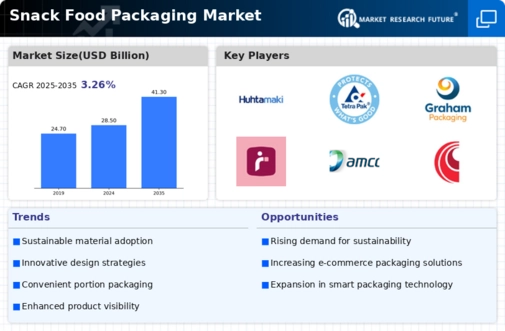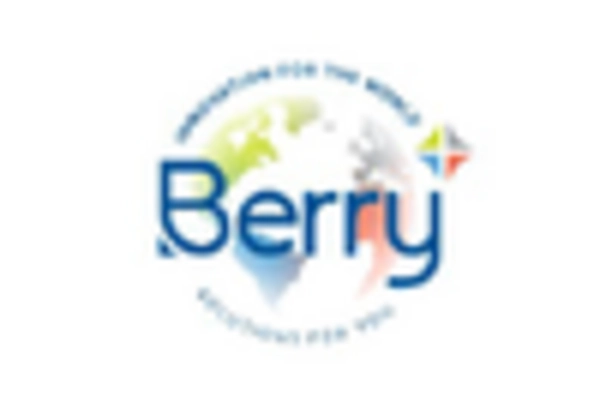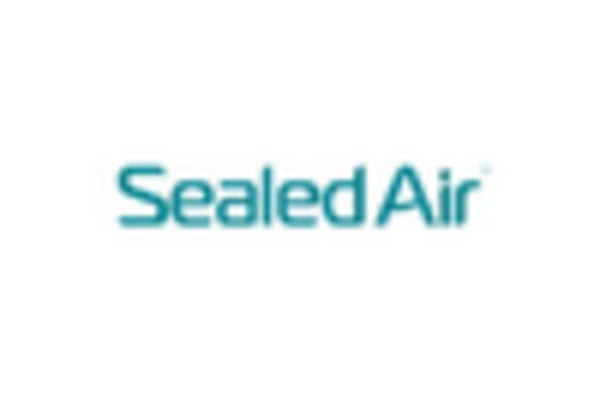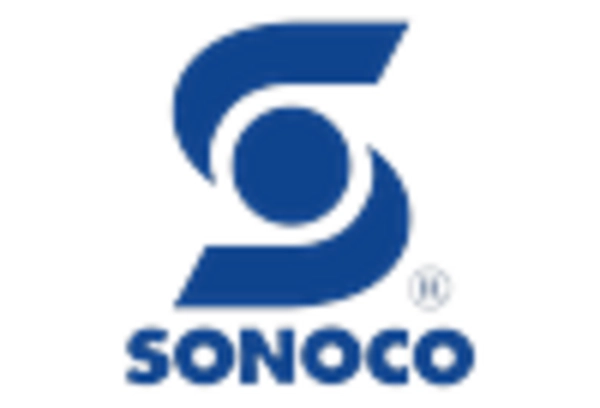Market Analysis
Snack Food Packaging Market (Global, 2023)
Introduction
Snack-Food Packaging is undergoing a transformation, driven by the ever-changing preferences of consumers, the emergence of new packaging technology and the growing demand for sustainable products. As health-conscious consumers seek convenient, portable snacks, the need for packaging solutions that not only preserve product freshness but also enhance visual appeal has risen. A wide range of flexible and rigid film and rigid containers, as well as sustainable alternatives, are used to meet the varying needs of snack foods and the expectations of consumers. In addition, the rise of e-commerce and online grocery shopping has influenced the design and functionality of packaging, prompting manufacturers to adopt more versatile and protective packaging solutions. Brands are increasingly using smart packaging to differentiate their products in a crowded market, and smart features such as QR codes and touch screens are becoming more common, offering consumers a more engaging and informative experience. Snack-Food Packaging is set for significant change as it adapts to changing trends in both consumer behaviour and the environment.
PESTLE Analysis
- Political
- The market for snack foods is affected by many political factors, such as regulations on food safety and packaging materials. The Food and Drug Administration of the United States of America has issued new guidelines requiring the labeling of certain chemicals on the packaging of food. This new rule will affect about 30 percent of the manufacturers of snack foods. In addition, trade policies and tariffs on imported packaging materials have increased the cost of production. Since 2022, the tariffs on aluminum and plastics have increased by 15 percent, affecting the overall price of the products.
- Economic
- In 2023, the market for snack food packaging shows a mixed picture. Prices have stabilized at 3.2%, but the price of raw materials for packaging has risen, and the cost of recycled paperboard is up 12% year-over-year. This has shaved the profit margins for manufacturers, who must maintain quality while controlling costs. However, the demand for snack foods remains steady, with an average household spending $450 per year on snacks.
- Social
- In 2023 the social trends will be more and more inclined towards the use of sustainable and eco-friendly packaging. Surveys show that up to 65% of consumers are willing to pay more for snacks packed in environmentally friendly materials, which will force companies to move towards biodegradable and recyclable packaging. The trend towards healthy eating also means that consumers are increasingly demanding transparent packaging that allows them to see the product. As many as 40% of snack food brands already use clear packaging to increase the visibility and appeal of their products.
- Technological
- In 2023, technological advances will transform the snack-food packaging market, as innovations in smart packaging will be a major trend. In the meantime, approximately one-quarter of new packaging solutions already include a QR-code or NFC tag, which gives consumers access to product information and promotions through their mobile phones. The automation of packaging processes has also improved efficiency. In particular, the use of robots has helped companies to save an average of 20 per cent on labour costs, and has increased production capacity and reduced time to market.
- Legal
- In the snack food market, legal requirements are becoming increasingly important, especially regarding the observance of environmental regulations. In 2023, the European Union stipulated that by 2025 all food containers would have to be either re-usable or re-cyclable, which would affect about fifty percent of the companies operating in the European Union. In addition, labeling regulations are becoming stricter, with fines of up to a hundred thousand dollars for non-compliance, which forces manufacturers to invest in legal consultations and compliance in order to avoid fines and stay in the market.
- Environmental
- In the field of the food packaging market, there is an increasing tendency to reduce the use of plastics. In 2023, it is estimated that 40 percent of snack food packaging is made from recycled materials, which represents a significant change in the direction of the transition towards greater sustainability. In addition, life-cycle assessment of the environmental impact of packaging is increasingly being used by companies. By 2030, thirty percent of companies plan to achieve carbon neutrality in the production of packaging. This is a clear indication of the industry's response to climate change.
Porter's Five Forces
- Threat of New Entrants
- The snack food packaging market has a medium barrier to entry, owing to the need for special technology and the need to meet food safety regulations. The leading players have strong market shares and a loyal customer base, but there are still opportunities for new entrants who focus on sustainable materials and on the development of new packaging solutions.
- Bargaining Power of Suppliers
- Suppliers to the snack-food packaging industry have limited bargaining power, because of the wide availability of suppliers for raw materials and packaging components. The presence of many suppliers allows the snack-food packagers to change suppliers with relative ease, reducing the influence of any one supplier on the industry’s prices and terms.
- Bargaining Power of Buyers
- High—The buyers in the market for food-processing containers, such as food manufacturers and retailers, are in a position of great power. They can demand lower prices and better quality because of the competitive market conditions and the availability of alternative containers. The suppliers are forced to keep innovating and improving their products.
- Threat of Substitutes
- The threat of substitutes in the snack-food packaging market is moderate, as there are other packaging materials and methods. But the unique requirements of food safety and preservation limit the extent to which substitutes can effectively replace traditional packaging solutions.
- Competitive Rivalry
- The competition in the snack food packaging market is very intense. The price, quality, innovation and environment are the main factors of competition. The result is a very aggressive marketing strategy and continuous product development in order to maintain the competitive edge.
SWOT Analysis
Strengths
- Growing demand for convenient and on-the-go snack options.
- Innovative packaging solutions enhancing product shelf life.
- Sustainability trends driving eco-friendly packaging materials.
Weaknesses
- High costs associated with advanced packaging technologies.
- Limited consumer awareness regarding sustainable packaging options.
- Potential for packaging waste contributing to environmental concerns.
Opportunities
- Expansion into emerging markets with increasing snack consumption.
- Development of smart packaging technologies for enhanced consumer engagement.
- Collaboration with food brands to create customized packaging solutions.
Threats
- Intense competition among packaging manufacturers.
- Regulatory challenges related to food safety and packaging materials.
- Economic fluctuations impacting consumer spending on snacks.
Summary
The snack food packaging market will be characterized by strong demand in 2023, driven by convenience and innovation, especially in sustainable packaging solutions. However, challenges such as high costs and the environment will remain. Opportunities for growth will come from emerging markets and new technology, while competition and regulations will continue to pose significant threats. Strengths and weaknesses must be strengthened and weaknesses reduced to take advantage of the market opportunities.

















Leave a Comment